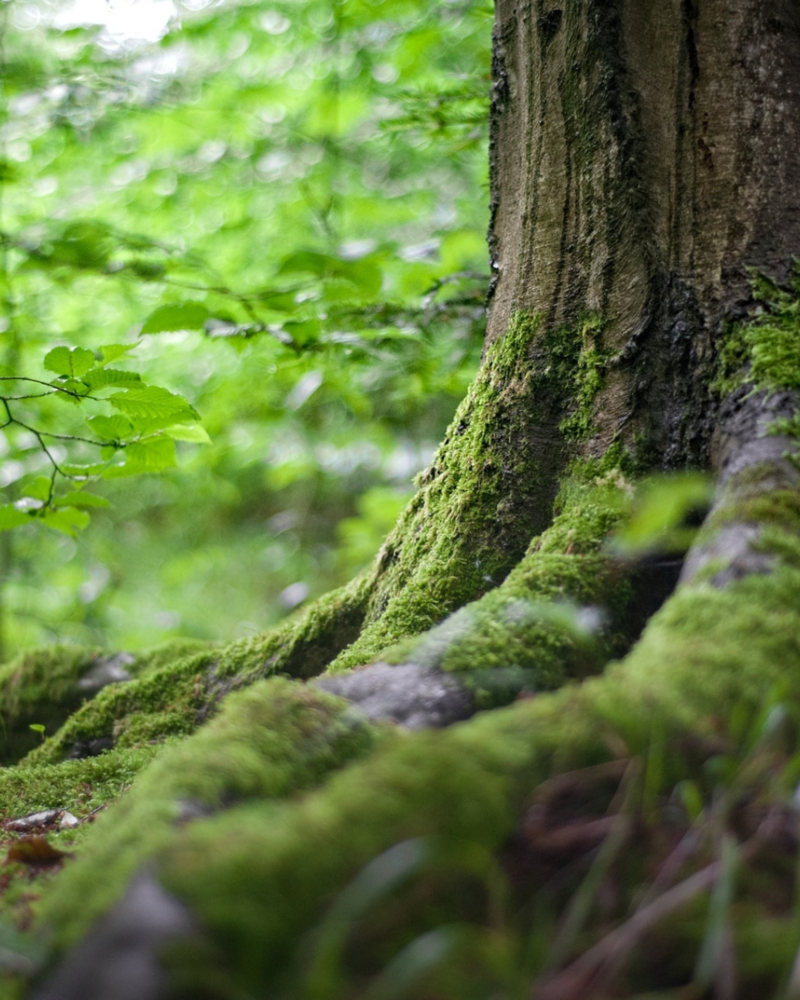
What comes to mind when you think of the colour green?
Green: The soft and vibrant glowing in a lustrous leaf uncurling, Earth’s eternal emerald weave, nature’s flag unfurling.
To what extent are our thoughts about the colour green captured in this poem? What else comes to mind?
Plants are the foundation of life on Earth. They provide food and habitat. A byproduct of their own food production process, known as photosynthesis, is oxygen, which helps us breathe! They are vital to our survival. Many plants contain various shades of green. In fact, humans are capable of distinguishing more variations of green than of any other colour – good thing as it helps us determine what plants are safe and beneficial for our use.
Part of the way plants feed themselves is by using chlorophyll in their leaves to collect sunlight. Chlorophyll is a type of pigment that absorbs red and blue light while reflecting green light back out – that’s why leaves appear green. In the fall, when trees have stored sufficient resources for the winter and anticipate reduced access to sunlight, they shut down their food production processes. This leads to the chlorophyll in the leaves breaking down so that the already present orange and yellow pigments underneath are revealed. In some cases, leaves appear red as additional pigments, called anthocyanins, are produced by the leaves as they are dying. These red pigments seem to protect the leaves from too much light as the green chlorophyll disappears.
So, now you know why some trees change colour in the fall. Leaves are important workers for the trees. They have their roles to play. Their times. Their seasons. When they are green, it is the time to work, to collect resources, to encourage growth.
In the Church, this is what green symbolises for us as well. We use green in what some might call ‘ordinary time’. It is used in the time between Epiphany and Lent and again from the celebration of Pentecost to the Reign of Christ. This can represent some 56% of our year (29 Sundays taking out Baptism of Jesus, Pentecost, Trinity, Harvest Thanksgiving, and Reign of Christ).
Liturgically, green gets used more than any other colour. So, it would be easy to take it for granted. It doesn’t necessarily feel special. Perhaps this is why it is the colour that perfectly fits with our Gospel story today.
Jesus replied: Who among you would say to your slave who has just come in from plowing or tending sheep in the field, 'Come here at once and take your place at the table'? Would you not rather say to him, 'Prepare supper for me, put on your apron and serve me while I eat and drink; later you may eat and drink'? Do you thank the slave for doing what was commanded? So you also, when you have done all that you were ordered to do, say, 'We are worthless slaves; we have done only what we ought to have done!'"
As the Church in the world, we are God’s servants, God’s hands, and feet, God’s workers in this world. We are like leaves, gathering the resources, nurturing the Body of Christ however we find it. We have our roles to play in our times and our seasons. We are continually challenged to seek to do what can with the gifts we have been given, trusting that the Son will feed and nurture us and help us grow. There may be times when change will happen. God will be present in those too and we can say we have only done what we ought to have done. Until then, may we continue to be as the colour green as long as we can, trusting in God’s gifts, being fed by the Son, and nurturing as we are able. This we pray as we sing: (SNC) 92 In Sacred Manner
